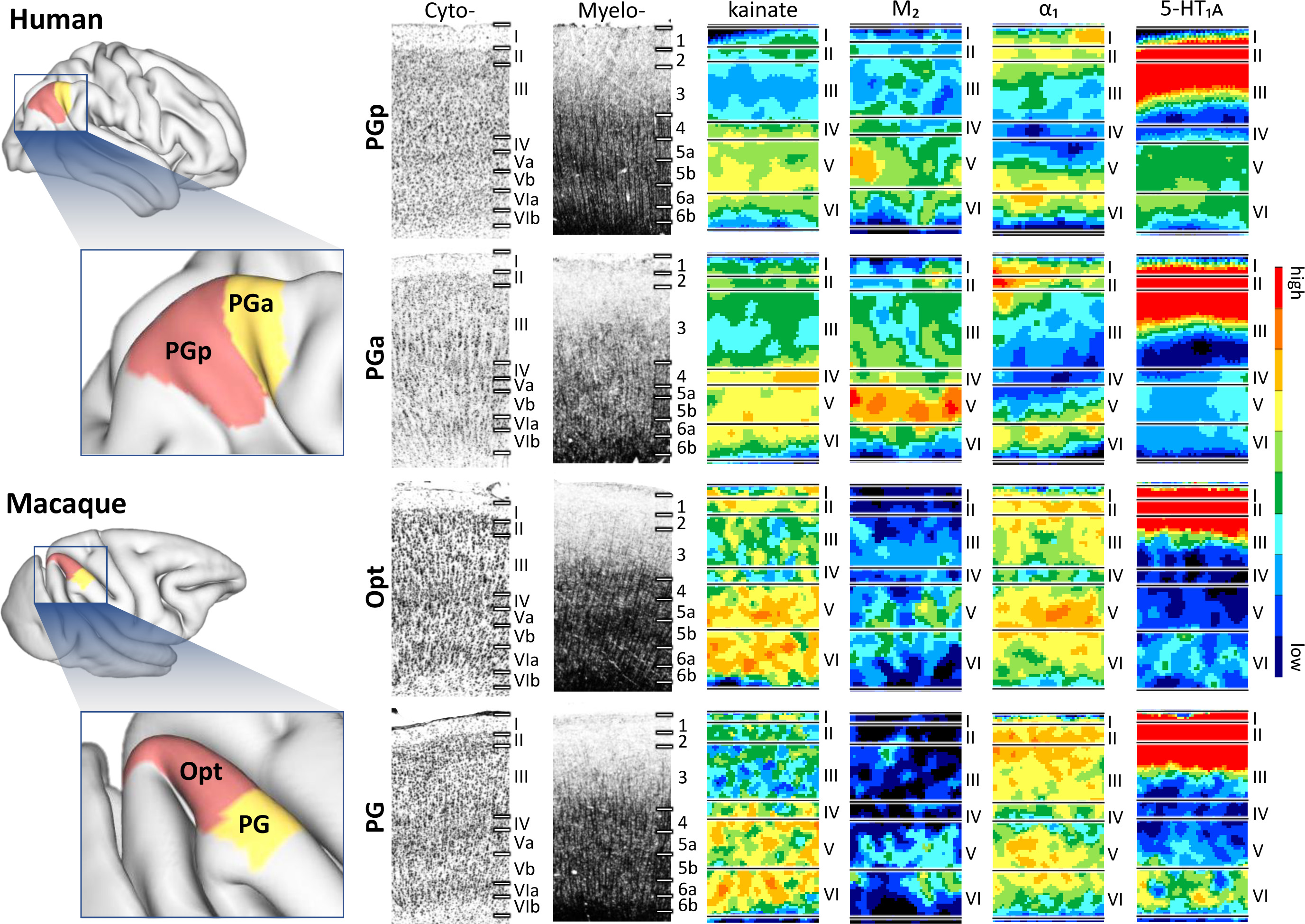Featured Paper
Architecture and connectivity of the human angular gyrus and of its homolog region in the macaque brain
By Meiqi Niu
date: Apr 2023
The angular gyrus (AG) is a horseshoe-shaped region of the posterior inferior parietal lobe in the human brain. It has attracted major interest since it’s a higher-order associative cortical region that plays a prominent role in the integration of multiple sensory systems. Identifying the homologies between areas of the human AG and their counterparts in the macaque brain is critical to take optimal advantage of nonhuman primate (NHP) models in both basic and translational studies.
In this review, Niu and Palomero-Gallagher (2022) emphasize two architectonically distinct areas (PGp and PGa) in the human AG and propose their homologs in areas Opt and PG of the macaque inferior parietal lobe, respectively. Further, they highlight how the contrast between the microanatomic simplicity of macaque posterior IPL and the particularly high complexity and variability of sulcal patterns in the human AG has difficulted establishment of homologies. This review provides a comprehensive overview of the cyto-, myelo- and receptor architectonic features as well as connectivity patterns of human areas PGp and PGa and macaque areas Opt and PG. Striking comparability of micro architectonic and connectivity features between human and macaque homolog areas was found, and comparable trends in the rostro-caudal gradations in receptor densities and similarities in laminar distribution patterns further support the definition of homolog areas.
This study provides an entry point for establishing accurate homologies between the human AG areas and their homolog areas in macaque monkeys, and elaborates on the rationale behind the definition of these homologies and their importance in translational studies.

Left: location and extent of the areas that occupy the human angular gyrus and their macaque counterparts.
Right: cyto-, myelo- and exemplary receptor architecture of human areas PGp and PGa, and macaque areas Opt and PG.
If we’ve caught your interest, be sure to check out the full paper here: https://link.springer.com/article/10.1007/s00429-022-02509-7.
Feel free to get in touch if you have any questions: m.niu@fz-juelich.de